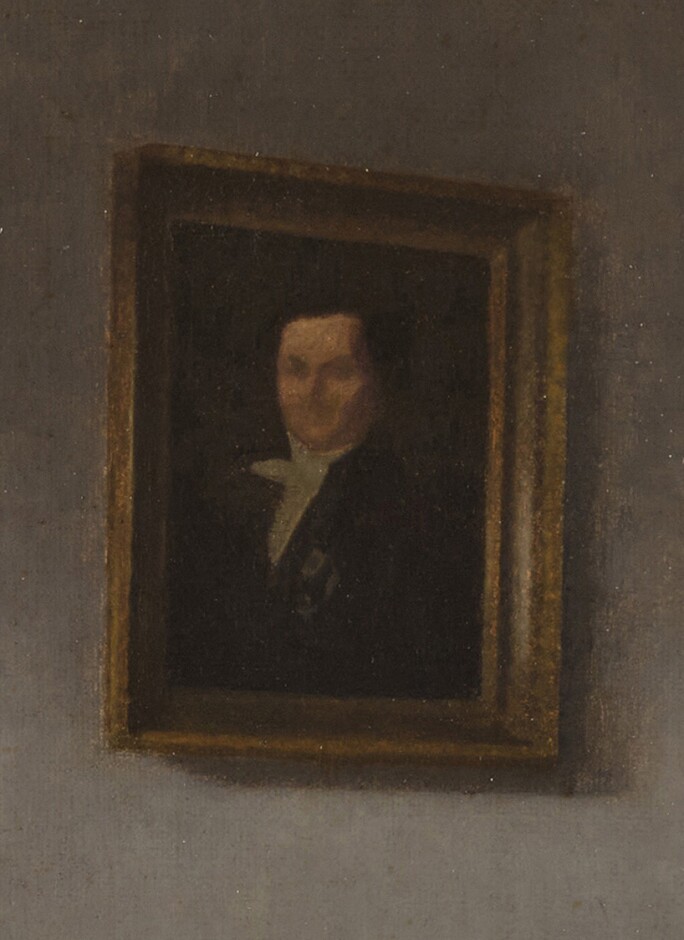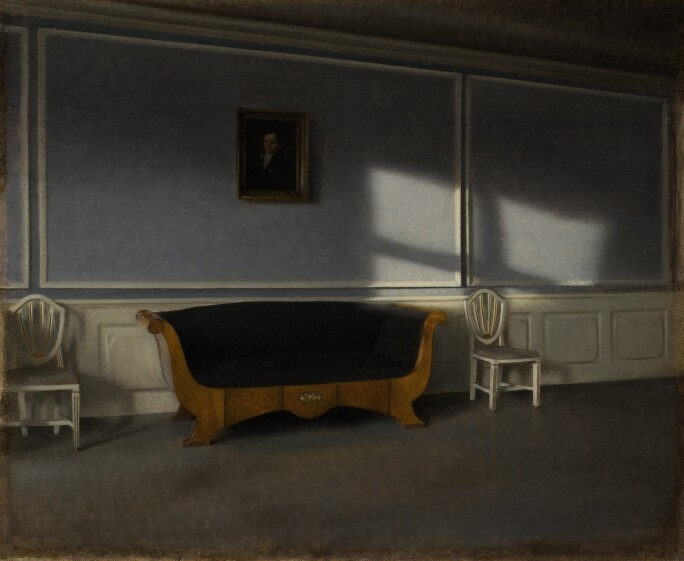
The appearance of this painting – which has remained hidden from public view in the family of its first owner – marks an important rediscovery. Sunshine in the Drawing Room II is one of three related versions of the composition Hammershøi painted in 1903 in the drawing room of his apartment at Strandgade 30, where he and his wife Ida lived from 1899–1909 and which became the setting for his most iconic interior paintings.

Sunshine in the Drawing Room I, (59 x 53 cm), showing a back view of Ida standing holding a tray, is in a private collection; while Sunshine in the Drawing Room III, depicting just the sofa flanked by two chairs and no figure, is in the collection of the Nationalmuseum, Stockholm (fig. 1). Seven years later, in 1910, Hammershøi painted a final version, closely based on the present painting but without the table and chair in the left foreground (58 x 67 cm), acquired by the National Gallery of Canada, Ottawa, in 2017. All four paintings feature the same portrait of a man on the wall, seen hanging on the wall in a photograph from 1903 of the artist and his wife seated on the very sofa in the painting (fig. 2). The sitter’s identity remains unknown, however his presence in the composition creates a silent dialogue between the mysterious gentleman and Ida – symbolised by the reflected sunlight on the expanse of wall, connecting the two faces.

A distinguishing, if not unique, feature of the painting is Hammershøi’s full signature lower right. The artist rarely signed his works and when he did, it was almost always simply with his initials, VH. Hammershøi’s appreciation of the rendering of light, space and line is unparalleled in this painting. His interiors find parallels both in the art of the past and in the work of his contemporaries. His use of light, muted tones, and choice of subject are indebted to the Dutch 17th-century master Johannes Vermeer, whose work Hammershøi admired and studied when he travelled to Holland in 1887. Both artists favoured the setting of a simple room with an indirect light source. However, the blue-grey palette and sense of solitude also bear striking similarities to the works of contemporary artists Hammershøi admired, notably James McNeill Whistler, while Hammershøi’s influence, in turn, can be felt in the works of later artists, including Edward Hopper, Gerhard Richter, and Ida Lorentzen.
This painting has been requested for the major 2027 Hammershøi exhibition; Vilhelm Hammershøi: Pictures from Home at the Art Institute of Chicago and The Frick Collection, New York.